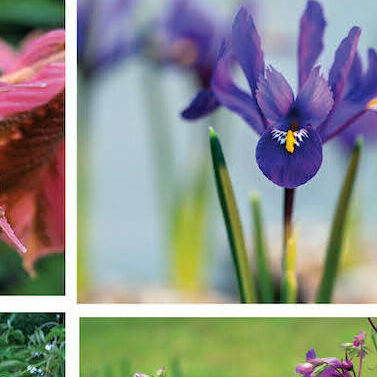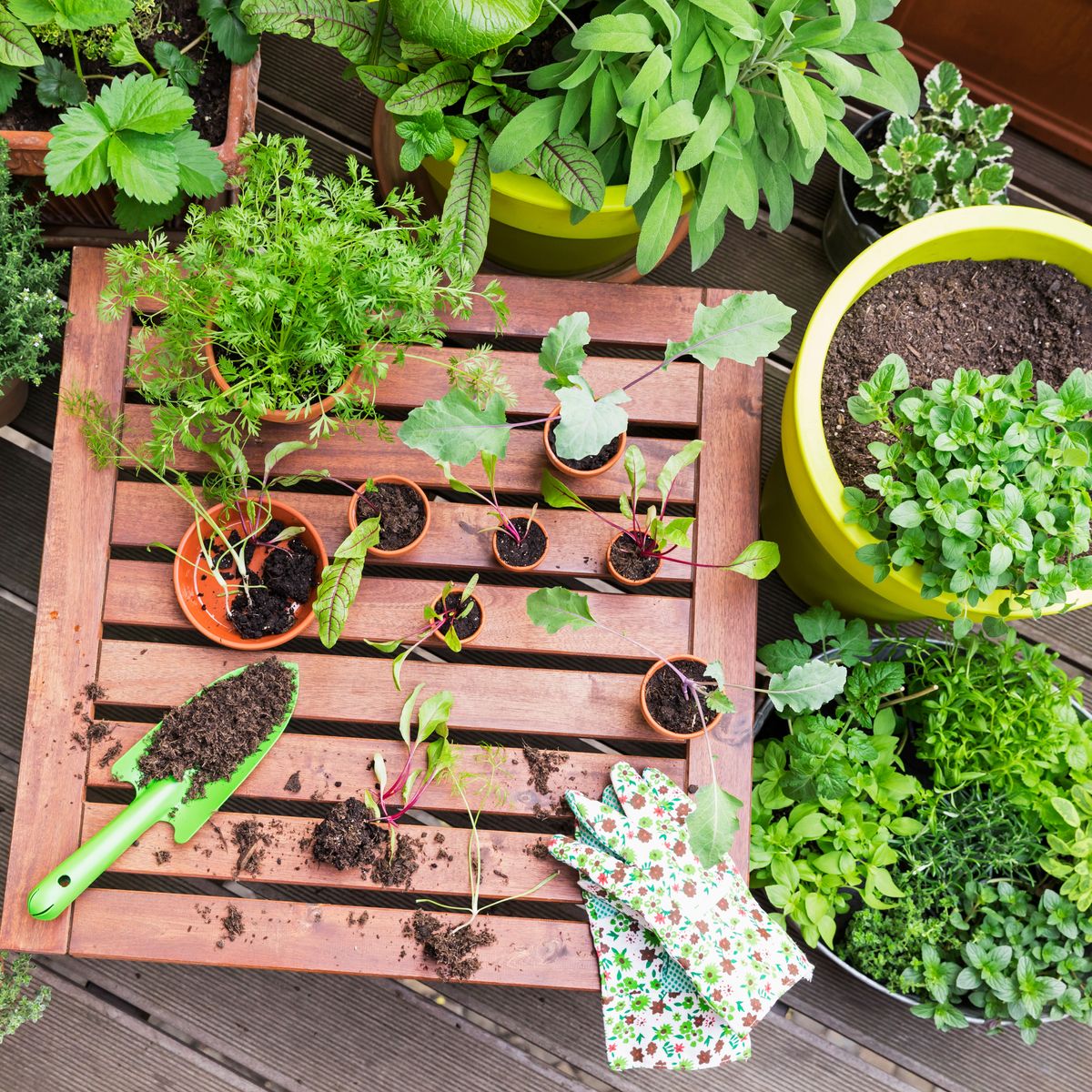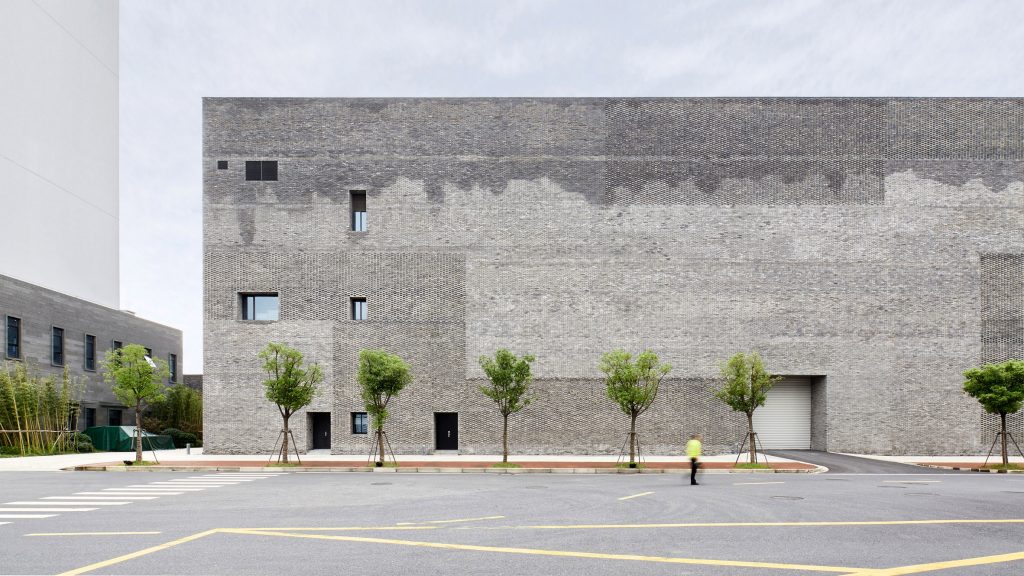Mandarin oranges have easily become one of the most popular snacks among children and adults. They are deliciously sweet, healthy, and easy-to-peel. Mandarins are a great on-the-go snack, but can also be used in a lot of different recipes. They can be used in salads, marinades, and an assortment of desserts. They also make excellent juice. There are a ton of different varieties that can be grown. Adding a single mandarin tree to the garden will provide plenty of fruit for the family and enough to share with friends.
The name Mandarin is often used to describe a range of species and hybrids such as clementines, tangerines, and satsumas. However, they are slightly different. Clementines and tangerines are hybrids of multiple citrus species. Tangerines are more closely related to true mandarins because they are a cross between mandarins and pomelos. Satsuma mandarins are classified as different species although the fruits have a lot of similar characteristics. All types are grown using the same care strategy, but the characteristics of the fruit are slightly different.
Often, mandarins sold in grocery stores are not marketed by the specific variety. They are packed and sold under brands like Halos, Cuties, and Peelz. The brands actually use several mandarin varieties that produce a similar product; an easy-to-peel, seedless, delicious mandarin orange. Mandarins bought in December will taste different from mandarins bought in March because they are completely different varieties. Growing your own mandarin tree will allow you to grow your favorite variety without having to guess when to buy them in the store.
Mandarin trees do require time and attention. They need to be pruned and fertilized every year and closely monitored for pests and diseases. Giving your mandarin tree the proper care it needs will go a long way and it is well worth it.
Get A Pixie Mandarin Tree
Get A Kishu Mandarin Tree
Get A Gold Nugget Mandarin Tree
Get An Owari Satsuma Mandarin Tree
Get A California Honey Mandarin Tree
Good Products For Growing Mandarin Trees:
Quick Care Guide

| Common Name(s) | Mandarin, mandarin orange |
| Scientific Name | Citrus reticulata |
| Days to Harvest | Annually in the late fall and early winter |
| Light | Full to partial sun |
| Water: | Moderate; water weekly |
| Soil | Well-draining |
| Fertilizer | Citrus blend or 12-6-6 |
| Pests | Mites, thrips, scales, aphids, lepidopterans, Asian citrus psyllid |
| Diseases | Phytophthora root rot, Anthracnose, Botrytis, Huanglongbing (HLB) |
All About The Mandarin Tree

Citrus reticulata originates in Asia. A standard mandarin tree will grow to an average of 25 feet at maturity while semi-dwarf trees will grow between 8-10 feet. Citrus reticulata blooms in the spring, develops fruit in the summer and ripens in the late fall and early winter. Mandarins are not deciduous, but growth slows or comes to a halt during the winter.
The leaves are dark green, ovate to lanceolate, and may contain thorns in the axil. The flowers are small with five white petals and grow in clusters. The fruit is smaller than a typical orange and has flat ends similar to the shape of a pumpkin. The fruit develops green and turns a deep orange when ripe. The fruit may be seeded or seedless depending on the variety and pollination.
Citrus reticulata is self-fertile. Commercial orchards will often cover trees in special netting to prevent pollination so that they can produce a seedless crop. There are some seedless varieties that do not require netting. Covering a tree in insect netting is a great natural option to make seedy fruit seedless. This is especially handy if the fruit is going to be eaten by young children.
There are a number of great mandarin orange varieties available to grow. Some of the more popular commercially grown varieties like Tango and Gold Nugget are available to grow at home. Less common varieties are Dancy, Honey, Shasta Gold, and Kishu. Shiranui is a large mandarin orange variety that is difficult to grow, but exceptional in taste and easy to peel. There are also some great satsuma varieties like Owari, Iwasaki, Okitsu Wase, and Dobashi.
Planting

The best time to plant orange trees is from April through August. Avoid planting when temperatures are above 100°F. Plant in a sunny location in well-draining soil. Trees can also be grown in a large pot. Mandarin trees should be planted as grafted trees. Rootstocks provide disease resistance and in some cases frost tolerance. When planting grafted trees, do not bury the graft union. If possible, leave at least 4-5 inches of the rootstock above the soil.
Trees should be purchased from a trusted nursery or garden center that follows local regulations in regards to citrus. Citrus-producing states such as California, Texas, Arizona, and Florida may have movement restrictions on young trees. Check with your local Agricultural Extension Office for more information on restrictions in your area.
Mandarin Tree Care
Caring for mandarin oranges is easy, but requires some attention in order to grow plenty of sweet-tasting fruit. Follow the tips below to guarantee a tasty harvest year after year.
Sun and Temperature
Mandarins can be grown in full or partial sun meaning it needs at least 6 hours of direct sun each day. They are hardy to USDA zones 8-11. They prefer hot summers and mild winters. Ideally, temperatures ranging from 40-90°F. However, they can tolerate temperatures down to 20°F for a short period and temperatures well above 100°F.
If there is fruit on the mandarin tree, freezing temperatures freeze and damage the fruit. The tree itself can tolerate lower temperatures before damage or death. Trees can be protected from frost by bringing indoors or by covering with frost fabric.
Sunburn is common on excessively hot days especially on tender growth, but the damage is minimal and the trees will eventually grow out of it. Sunburn can be prevented by covering trees with a light shade-cloth or by covering the tree in a whitewash.
Water and Humidity
Water citrus early in the morning once a week. Soil should be kept moist, but not soggy or saturated. Use soaker hoses or drip irrigation to avoid wetting the trunk of the tree.
Trees planted in a pot may need to be watered more often. They should be fully saturated and allowed to dry down until slightly moist before the next watering. Potted trees can be watered using drip irrigation or manually with a hose. If watering manually, avoid wetting the trunk.
Trees should be well watered during fruit development. Once the fruit reaches full size or around full size, water less frequently to build up the sugars in the fruit. Trees do not need extra water during the rainy season.
Soil

Mandarin trees tolerate a wide range of soil types but require good drainage. Trees benefit from the soil with high organic matter. Mandarins tolerate a wide pH range but thrive in a pH range between 5.5-6.2.
If planting in an area with poor drainage or poor quality soil, plant the orange tree in a raised bed and amend the soil with organic matter.
Fertilizing
There are a lot of different fertilizers available at garden centers specifically formulated for citrus. The rates and application frequency depend on the fertilizer blend and whether or not it is a slow-release blend. Slow-release blends typically need to be applied once or twice a year.
Mandarins should be well fed between March-August when trees are most actively growing. If a citrus fertilizer mix is not available, 12-6-6 can be used. Look for fertilizer blends that also incorporate micronutrients such as magnesium, zinc, iron, and copper.
Pruning
Prune your mandarin tree between February and April preferably before bloom. Mandarins are not deciduous, so trees will maintain their leaves throughout the entire year. Prune to remove dead or damaged branches, to maintain size, remove suckers, and open up the tree’s canopy.
Suckers are shoots that grow from the rootstock. These shoots will look very different from the mandarin variety and should always be removed. These shoots will not produce good fruit. Remove suckers by cutting them flush with the main trunk.
To open up the canopy, remove any overlapping limbs or limbs that have a narrow-angle on the main trunk. When removing deadwood or diseased branches, prune back several inches below the dead or diseased branch to ensure the entire infection or dead portion is removed. Old or damaged fruit should also be manually removed. While it should fall off naturally, removing the old fruit will prevent diseases and preserve resources for shoot growth and flowering.
Mandarins do not require older growth to produce fruit. Flower buds are very noticeable on trees. Pruning off flower buds will reduce the amount of fruit for the season.
Propagation
Before propagating citrus, check for local restrictions on citrus propagation. In some areas, it is illegal to propagate citrus material that does not derive from a clean stock program. If you are able to propagate citrus in your area, there are a few different reliable methods for propagation. Methods include grafting, rooted cuttings, and seed propagation.
Grafting is the most reliable way to produce a strong disease-resistant mandarin tree. There are a few different rootstocks available for mandarins. The most popular are C-35, Carrizo, and Flying Dragon. C-35 and Carrizo are the standard tree size with C-35 being slightly smaller of the two. Flying Dragon is a semi-dwarf rootstock. Rootstocks are grown from seed but can be bought as liners. Once the rootstock is thick enough, it can be grafted with the desired variety. Chip budding is the most common method used for grafting.
Rooted cuttings are also an option for propagating mandarin trees. Cuttings should have 2-5 leaves or nodes. Use a rooting hormone and keep cuttings under high humidity until they form roots. It is not recommended to plant these trees in the ground because they are susceptible to root diseases. These trees will also be less frost tolerant than grafted trees.
Seed propagation can be done on mandarins because they are polyembryonic meaning they have several embryos within one seed. Polyembryonic seed tends to be true to type, so growing an orange tree from seed should produce the same characteristics as the parent tree. Similar to rooted cuttings, these trees should not be planted in the ground due to disease susceptibility and they may be less frost tolerant than a grafted mandarin orange tree. Trees planted in a pot will need to be protected or brought inside during frost.
Harvesting and Storing

Harvesting mandarin oranges at the right time can be a little tricky, but easy to learn. There are also great options for short-term and long-term storage.
Harvesting
Mandarin oranges are ready to harvest when fully orange and slightly soft. The best way to know if a mandarin orange is ready is by tasting one or a few. If they are sour, they need more time. They should be juicy with a sweet flavor.
Do not pull oranges off the tree. Pulling the fruit will cause the top of the peel to come off exposing the fruit. The best way to harvest is to twist up at an angle or cut the fruit off the tree with clippers. Fruit should be washed before storing to prevent any contamination.
Storing
Mandarin oranges can be stored for around 1 week at room temperature. They can be stored for 2 weeks in the fridge. Keep in mind, fruit purchased from the store has a waxy coating to prevent moisture loss and extend the shelf life. Fruit grown at home will not have a waxy coating, so it will not last as long due to moisture loss.
Freezing, dehydrating, and canning are all options for long-term storage. Frozen oranges are great for making smoothies and can later be thawed and added to salads or other dishes. Dehydrated mandarins are great to add to cocktails, desserts, tea, and they make excellent accessories to wreaths and garlands. Canning is a great option to preserve the plump juicy texture of mandarins. Although it takes much more work, it allows for you to enjoy mandarin oranges even when they aren’t in season.
Troubleshooting

Unfortunately, mandarin orange trees do not come without problems. Below are some potential complications and tips to resolve them.
Growing Problems
Most problems will be insect or disease-related, but there are a couple of things to keep in mind when growing mandarins. Although mandarins can tolerate partial sun, not enough sun may cause the orange tree to not fruit. Excessive stress from heat or lack of water may also cause flower abortion or early fruit drop. Differences in weather such as excessive rain or a warm winter will cause variations in fruit quality. Some years will produce better fruit than others due to natural temperature and rain fluctuations.
Pests
Mites are small arachnids that feed on the leaves of mandarin trees. There are several species of mites that feed on citrus. The most common mites cause stippling damage on the leaves. Heavy infestations will cause leaf drop. Mites are extremely small and difficult to notice. Usually, the damage is noticed before the mites. In order to identify the type of mite, use a hand lens or microscope. All adult mites are small, eight-legged, and tend to stay in clusters on the undersides of leaves. Some mites produce webbing while others don’t. Colors range from a creamy yellow to dark red. Mites tend to attack weak or stressed trees. Keeping a healthy orange tree is the most important defense against mites. A healthy orange tree tends to have a good balance between pest mites and predatory insects to keep the populations under control. If mite populations get out of control, use horticultural oils and insecticidal soaps to knock down heavy infestations.
Thrips are small yellow to orange insects that feed on the leaves and flowers of mandarin trees. Feeding damage causes curling and scarring on the leaves and scarring on young fruit. In general, thrips are not damaging enough for treatment on mature trees. In young trees, they may stunt growth. Creating an environment that promotes beneficial insects is the best way to keep thrips populations under control. Thrips are very difficult to control by spraying, so it is not recommended. If thrips become a major problem on younger trees, a good option is to protect the tree with insect screens until the new growth is no longer tender and attractive to thrips.
Soft and armored scales can be found on the twigs and branches of trees. There are several species of scale in a range of colors from yellow to brown to black. Damage does not come directly from the scale. Scales produce excessive amounts of honeydew which leads to sooty mold. Sooty mold covers the leaves which inhibits photosynthesis and leads to leaf drop. Scales are usually controlled with natural predators and parasites. If treatment is necessary, oil sprays are effective.
Aphids are small soft-bodied insects that feed on the sap of tender plant tissue. They come in a range of colors such as yellow, orange, green, and black. Aphids can cause some deformation in leaves. They also produce honeydew which can lead to other problems like sooty mold. Aphids are usually controlled by natural predators; however, populations can still become off-balance and damaging. Aphids can be controlled by manually removing leaves with heavy infestations and by hosing them off with water. Horticultural oils and insecticidal soaps are also effective in controlling aphids.
Lepidopteran pests include several types of moth larvae that cause damage to the leaves. There are a few leaf roller species that cause damage to the tender growing tips. Citrus leaf miner is also a lepidopteran pest that causes mining damage that typically looks like tunnels on the undersides of leaves. Lepidopteran pest damage is mostly cosmetic but can stunt growth in young trees. Larvae can be manually removed on young trees. Treatment should not be necessary on mature trees. If citrus leaf miner damage is bothersome, there are pheromone traps that can be placed on trees to disrupt mating.
Asian citrus psyllid is a small mottled brown insect around the same size as an aphid. Nymphs are yellow to green and lay flat on leaves and twigs. These psyllids produce white spindly excrement, which makes identification easier. Psyllids inject a toxin during feeding which may cause a burn back on tender new growth. However, feeding damage is not the main concern. They are considered a major pest because it vectors a devastating disease called Huanglongbing (HLB) or citrus greening disease. Depending on your area, the presence of Asian citrus psyllid will warrant different responses. It’s best to research the local regulations and reach out to your county office if there are any questions.
Diseases
Phytophthora root rot is one of the most common root diseases in mandarin trees. It causes a general decline in trees. The leaves will look yellow or a light green color. Advanced stages will present “gumming” or sap oozing from the trunk of the tree. Trunks may also exhibit a water-soaked appearance. Phytophthora is prevented by using best irrigation practices and planting in well-draining soil. There are also rootstocks that are resistant or more tolerant of the disease. It is extremely important to leave at least a few inches of the rootstock above the soil line. Most fruiting varieties are very susceptible to Phytophthora, so leaving the graft close to the soil will increase the risk of infection. There are beneficial microbes and mycorrhizae products that can be applied to boost plant health and immunity to diseases like Phytophthora. However, good watering practices will be enough for the prevention of this disease.
Anthracnose and Botrytis are both foliar diseases that thrive in wet conditions. Symptoms of these two diseases are twig dieback, leaf drop, and fruit decay. Anthracnose is identified by the dark spores on the leaves and twigs while Botrytis spores are a lighter gray color. Both diseases can be managed with good cultural practices. Prune trees to allow adequate airflow to avoid excessive moisture that favors spore development. Removing dead or damaged branches and old fruit will prevent the disease from infecting the following season. Using proper cultural practices will eliminate the need for chemical fungicide sprays.
Huanglongbing (HLB) is also referred to as Citrus Greening disease. This disease is devastating to citrus as there is no cure. Symptoms of this disease include yellow mottled leaves, sudden death in young trees, small or deformed fruit, and discolored or green fruit. This disease is spread by the Asian Citrus Psyllid, so controlling the insect will prevent the disease. The disease can also be transferred when grafting with infected plant material. Once an orange tree is infected, it needs to be removed. It is important to ensure that any new trees planted come from reliable nursery sources that are following regulations set by each state. For example, citrus trees grown in California should have a CDFA label that ensures they have come from clean nursery stock.
Frequently Asked Questions

Q: How long does it take to grow a mandarin tree?
A: Trees bought from nurseries and garden centers will be anywhere from 1-4 years old. Mandarin trees will start to produce a significant amount of fruit at around 5 years.
Q: How big do mandarin trees grow?
A: Depending on the rootstock, mandarin trees will grow between 8-25 feet. Semi-dwarf trees grow between 8-10 feet and standard trees grow around 25 feet.
Q: Why do mandarins fall off the tree?
A: Mandarin oranges naturally fall off the tree when ripe. It is common and completely normal for some fruit to drop when immature. Mandarin trees naturally thin fruit to balance their resources and stay healthy.
The Green Thumbs Behind This Article:











